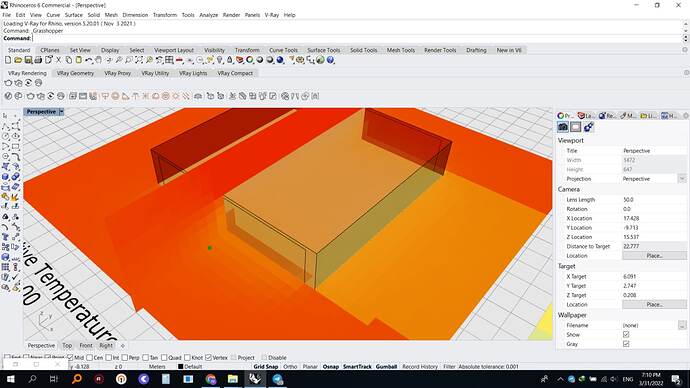Hi everyone
My colleague and I used honeybee-legacy to investigate the effect of building wall and windows reflections on street temperature conditions.
We modeled a small and very simple urban environment for a test that consists of three spaces. we considered the space on both sides as the buildings around the street and the space in the middle as the street.
After performing the simulation, the results were a bit unexpected. As the ratio of the windows increases, the amount of radiant temperature decreases. While this amount should be increased due to the increase of reflections from the windows towards the street.
I checked this with the example file in hydrashare, and the same thing happens in that example file.
Do you think the problem is with my code??
comfort-temp (1).gh (671.3 KB)
Hi @Erikbeeren ,
Thank you for your help.
I tried these files. Again, when the window ratio rises, the building’s outside temperature decreases by a very small amount. as the windows ratio increases, the reflections in the outdoor environment also increase. The temperature of the outdoor environment should also increase at least slightly due to these reflections. But in the simulations for these examples, this result is not obtained.
Hi @ilkin,
It is difficult to say what realy is hapening. It depends a lot on the different material definitions and the time step of the simulation. General you can expect the following to happen.
-
Window: Part of the radiantion will pass through the window and will enter the room. That is why rooms with big windows facing the sun can heat up too much. The outside surface temperature of the window will therefor be less.
-
Wall: Heat radiaton from the sun will be partly abosorbed and partly refected by the wall. No radiation will pass the wall. Because of this absorbtion the wall heats up. So the temperature of the wall surface is probably higher then the temperature of the window surface.
-
Outside temperature: The mean radiant outside temperature is calculated with view factors. So if there is a surface with a high temperature nearby the place where you are standing, you will feel the heat of this surface. Just like a radiator.
In the following link you can see a simulation I made of surface temperatures during a hot summer day.
The loading of theanimations is quite slow. (have some patience)
Hi @Erikbeeren ,
Thank you very much for your explanation. I will look at the surfaces details to see what is happening.
Thanks for sharing the simulation you did. It was very interesting and informative.

